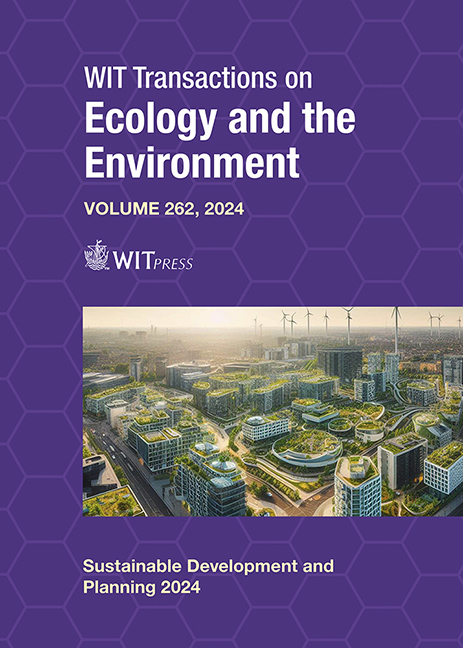INFLUENCE ON AIR QUALITY OF MOVING FROM DIESEL TO ELECTRIC BUSES: THE CASE OF THE CITY OF CUENCA, ECUADOR
Price
Free (open access)
Transaction
Volume
262
Pages
13
Page Range
669 - 681
Published
2024
Paper DOI
10.2495/SDP240551
Copyright
Author(s)
RENE PARRA, CLAUDIA ESPINOZA, CRISTIAN CAGUANA, EMILIO HEREDIA
Abstract
Diesel vehicles are essential sources of nitrogen oxides (NOx = NO + NO2) and fine particulate matter (PM2.5) in Cuenca (2,500 metres above sea level (masl)), an Andean city located in southern Ecuador. According to the recent emission inventory, during 2021, diesel buses, which currently operate as part of the public transportation system, contributed 1,115 t/y and 98 t/y of NOx and PM2.5, corresponding to 16.4% and 18.3% of the on-road atmospheric emissions, respectively. To promote efficient and sustainable energy use in the country, the Organic Law on Energy Efficiency, in force since 2019, provides that from 2025, all vehicles incorporated into the urban and inter-parish public transport service must be electric. We assessed the effects on air quality of this shift, modelling the dispersion and photochemical reactions of air pollutants during October 2021, with the Weather Research and Forecasting with Chemistry (WRF-Chem) model under two scenarios: (1) the reference scenario (RS) using the emissions from all the sources of the emission inventory; and (2) the future scenario (FS) with electric buses replacing the current diesel bus fleet. The difference RS minus FS results at the historic centre of the city indicated benefits in terms of reduction of the daily maximum 1 h mean NO2 (between 0.4 to 8.1 µg/m3, median 2.9 µg/m3) and 24 h mean PM2.5 (0.3 to 2.3 µg/m3, median 1.4 µg/m3) levels. However, the daily maximum 8 h mean ozone (O3) increased (1.0 to 3.6 µg/m3, median 2.3 µg/m3). This increase of O3 levels in the urban area of Cuenca is explained by a volatile organic compounds (VOC)-limited regime for O3 production, suggesting that the future shift from diesel to electric buses needs to be accompanied by controls for decreasing VOC emissions, especially those coming from gasoline cars, service stations and the use of solvents.
Keywords
ozone, VOC-limited regime, weekend effect, COVID-19 lockdown





